Did you know that there are about a thousand types of bananas? Yes, you read that right. Bananas might be one of the most popular fruits in the world, but we are sure that you are only familiar with a few of its varieties.
It may come as a surprise to many but bananas are actually berries. They are elongated tropical fruits grown by numerous types of big herbaceous flowering plants of the genus Musa. Each variety has its own slightly different flavor and comes in different sizes and colors.
Bananas are one of (if not, the most) popular tropical fruits loved by people all over the world for their distinctly sweet, even sometimes savory, and fruity taste.
Bananas are also super versatile because they can easily be paired with other fruits and types of food. Bananas can even be prepared in various ways.
In addition to this, bananas are packed with lots of nutritional benefits. They are fiber-rich fruits and contain several antioxidants.
Like what we mentioned above, there are hundreds of banana types. Talking about each of them would surely take a lot of time. That’s why we are here to introduce to you 15 of the best types of bananas you can eat.
Different Types of Bananas
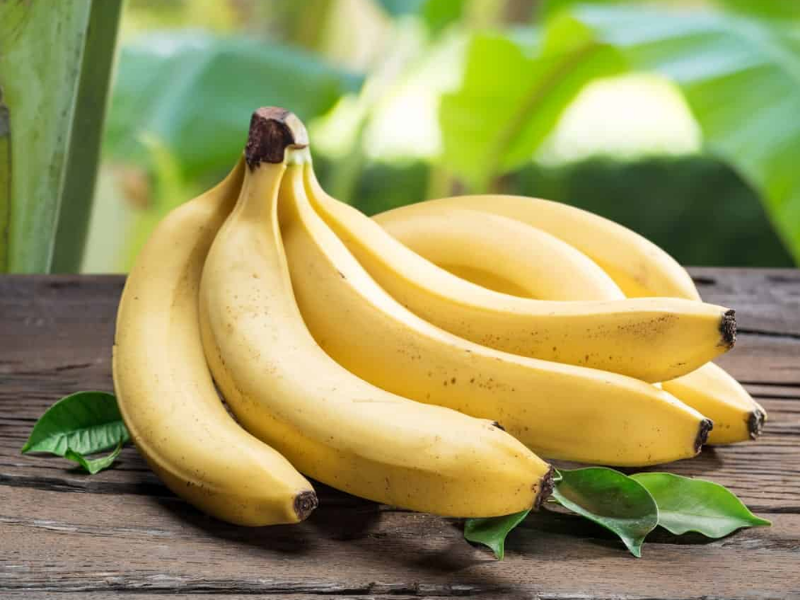
Cavendish Banana
Let’s get back to the basics with the first banana type. Cavendish bananas are probably the most common and widely accessible banana type. Named after William George Spencer Cavendish, the 6th Duke of Devonshire, it’s the typical banana you can find at your local grocery store or market.
Cavendish bananas come with a green color when underripe. It turns yellow as it ripens. It then develops brown spots as time progresses until it rots.
You can eat Cavendish banana when it is underripe, ripe, and even overripe. The Cavendish banana has a creamy texture and is mildly sweet, perfect to add on pancakes, smoothies, and banana bread.
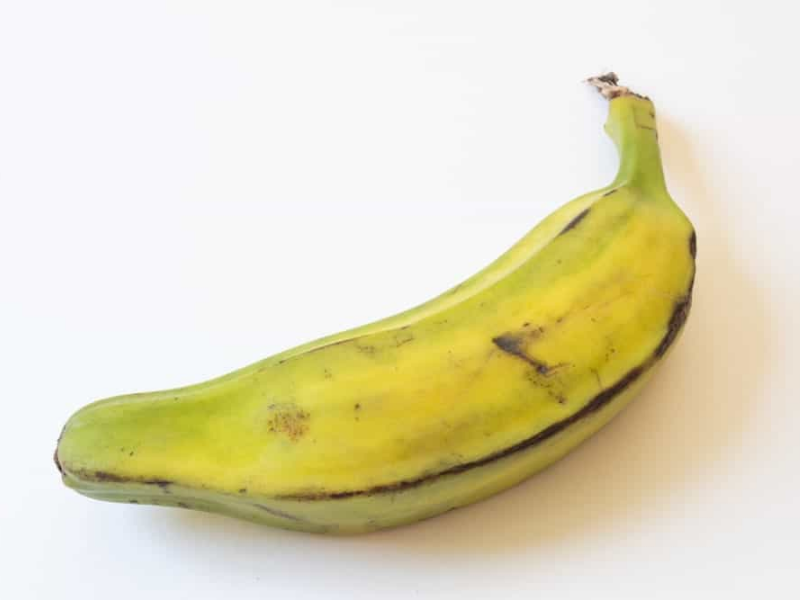
Burro Banana
Burro bananas are also called Horse, Orinoco, or Hog bananas. Its name varies depending on the location. Looking at this banana, you will immediately think that it is among the most unique varieties. What makes it different is its lemony and acidic flavor, which is something you don’t commonly find in other bananas.
When ripe, burro bananas are used in dishes like plantains. On the other hand, when burro bananas are ripe, they can be eaten raw.
Because of their unique, delicious taste, they are also used as a savory component in Filipino, Thai, Indian, Latin, and Caribbean cuisine. The burro bananas are usually cooked with meat, spices, berries, cream, and other ingredients.
In comparison with Cavendish bananas, Burro bananas are flatter, smaller, and squarer in form. They are generally yellow with black specks and a slightly crunchy, crispy center.
The flesh is creamy white or golden in color and tender in the middle with a slight stiffness.
It’s worth noting that burro bananas are also rich in magnesium, potassium, fiber, and vitamins B and C.
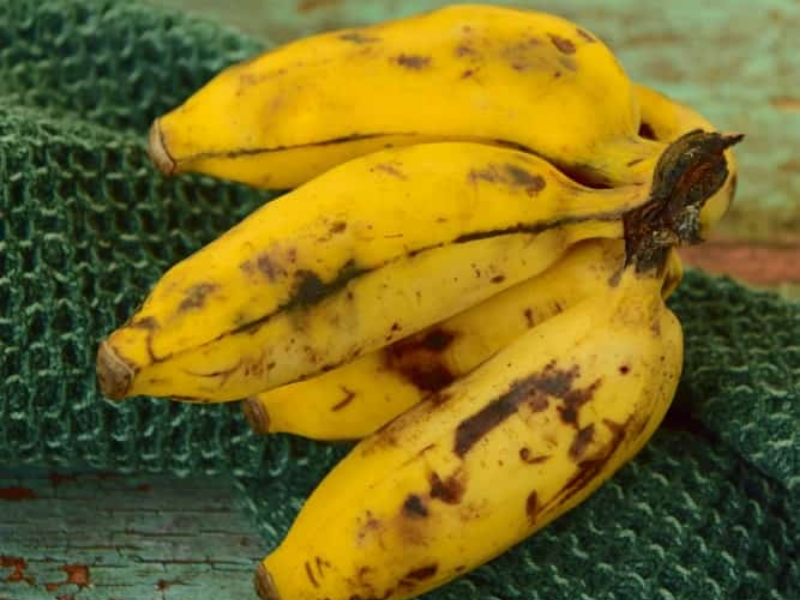
Pisang Raja
Pisang Raja bananas, also known as Musa Belle bananas, are quite a popular variety in Indonesia.
Because of their sweet flavor, reminiscent of honey-flavored custard, and slightly grainy texture, they are the main ingredient used in the famous Indonesian street food called Pisang Goreng (banana fritters).
Pisang Raja bananas are also used in other Indonesian street food and snacks such as nagasari (banana dim sum), banana chips, and sale pisang (sun-dried banana).
Did you know that the term Pisang Raja banana translates to king banana? That’s how famous and loved this banana variety is.
This banana type has a beautiful yellow to orange hue on its thick skin. They’re around four to six inches long, which is a little smaller than Cavendish bananas. In comparison to other bananas, Pisang Raja has a much more delicate scent.
On top of their deliciousness, Pisang Raja bananas are very nutritious and packed with vitamin A and C content, which are great for the immune system and eyes.
Nevertheless, the Pisang Raja banana is not widely available in other parts of the world, and it is quite hard to find outside of Indonesia.

Red Banana
Red bananas are probably one of the easiest varieties of bananas to identify for obvious reasons.
So, what sets these bananas apart? Well, from the name itself, red bananas are popular for their beautiful thick reddish-purple or maroon skins. But despite that, the skin is only red or maroon at first, but upon maturity, it becomes yellow-orange.
They are significantly sweeter and softer than Cavendish bananas. Some red bananas even have a mild raspberry flavor and others have an earthy flavor. They come in a variety of sizes and their flesh has a pinkish or orange-ish shade.
Red bananas are grown in South America, Asia, East Africa, and the United Arab Emirates, among other places. Red bananas are most often consumed raw or used in juices.
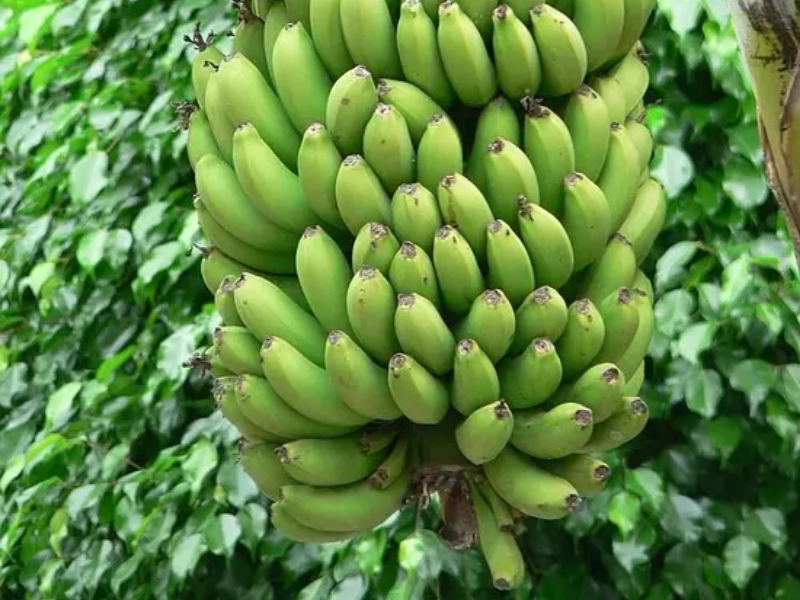
Lady Finger Banana
Lady Finger bananas, also called baby (niño) bananas, date bananas, fig bananas, or sugar bananas, are a bit sweeter and smaller than Cavendish bananas.
They have a creamier texture and a sweeter flavor, a lot like honey, compared to other types of bananas and they normally measure approximately 4-5 inches long.
Lady Finger bananas are cigar-shaped, little, short, and plump. When completely ripe, they feature a bright and thin yellow peel with brown specks and white flesh.
They’re usually eaten raw but they can also be eaten in sweets, baked, and blended into smoothies. Overripe Lady Finger bananas are also used to make banana bread.
They are a little more costly compared to other types of bananas but they are still very much affordable. Parents buy these for their children because they make excellent portion-controlled snacks.
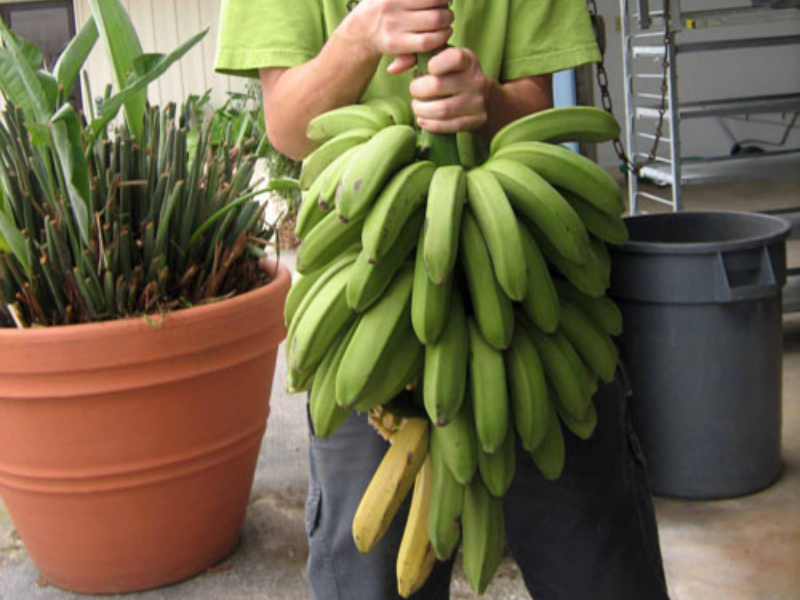
Goldfinger Banana
Goldfinger banana, a relatively newer banana cultivar, is a special hybrid dessert banana with pest-resistant qualities that was developed in Honduras in 1988 by scientists, Phillip Rowe and Franklin Rosales.
It is like the “perfect” banana, created to eventually replace the disease-prone species of bananas, as it is cold-resistant, wind-resistant, and pest-resistant. It also does not turn brown when chopped.
What can this banana not do? It has definitely set a higher standard for bananas.
This new banana cultivar native to Honduras has a pleasant, somewhat apple-like flavor. It is fried and even turned into chips when it is green. It is, on the other hand, eaten raw and commonly used in sweets when ripe.
It is fast gaining popularity in Australian markets. It has yet to make an impression in Europe and North America, though.
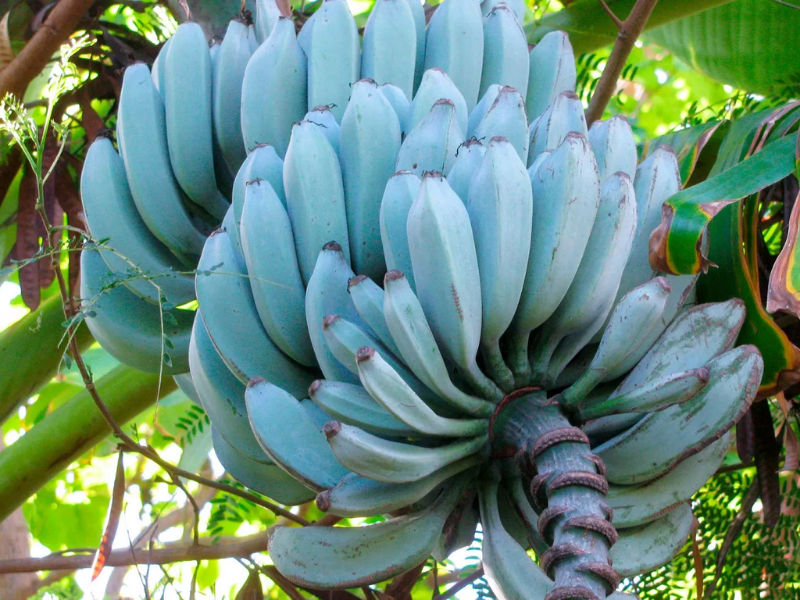
Blue Java Banana
The name alone says a lot about what Blue Java bananas are. This type of banana got its name from its unique bluish-silvery peel that does become pale yellow eventually when they mature.
What’s more, because of its sweet vanilla custard flavor and extraordinary creaminess, Blue Java bananas are also called the “ice cream banana.” Eating them is just like eating vanilla ice cream!
They are fragrant, sweet bananas that may appear just pretty but are very tough and can withstand colder climates and strong winds, making them a popular favorite in more frigid regions.
Whether eaten raw, added to custards, frozen to make ice cream, and made into other sweets, or cooked, Blue Java bananas will be absolutely enjoyable and equally delicious every time.
Blue java is popular in South East Asia, Northern Australia, and Central Asia because of its hardiness and cold resistance.

Plantain
In Europe and North America, bananas are generally divided into cooking and dessert banana varieties depending on how they are usually used. In the case of plantains, they are considered cooking bananas.
It is common to utilize plantains as a vegetable since they are high in starch and are never as sweet as the usual bananas we have.
Plantains go through the same color changes as bananas when they are allowed to mature. Because they are not as sweet, they’re not usually eaten raw and are instead used in savory recipes.
Underripe green plantains are hard and gritty and have a potato-like flavor. Ripe yellow plantains are mushy and starchy, yet still tasty and sweet. Overripe plantains have the sweetest flesh and are black. They are usually used in curries, fried into banana chips, steamed, or roasted.
Did you know plantains are even considered as a separate food item from bananas in some countries? They must feel so left out from other types of bananas.

Manzano Banana
There’s a reason why Manzano bananas got their name.
Manzano means apple trees in Spanish, and this type of banana was given that name because of its tart apple-strawberry flavor.
Manzano bananas are even sometimes called apple bananas or candy apple bananas for this reason.
These short, plump fruits with thick skin and a light, creamy flesh are sweeter than Cavendish bananas and are the most popular dessert in the tropics.
When Manzano bananas ripen, they have a tart-apple scent and a velvety texture. It even develops such a rich flavor with hints of strawberry and pineapple. Their thick yellow skin also becomes black as they mature, which is when they taste best.
This dessert banana is also a great source of Vitamin C, potassium, amino acids, and fiber. They are even used as ice cream bananas. Central and South America, the Caribbean Islands, and Mexico are the most common places to cultivate them. They are made into puddings, ice cream, smoothies, pies and can even just be eaten raw.

Barangan Banana
The Barangan banana is quite a popular banana cultivar that’s served as a dessert in many tropical countries. The rind of the Barangan banana is yellow and covered with little black specks. It has white flesh with no seeds. This banana type is high in carbs, proteins, and vitamins.
The Barangan banana is quite simple. It’s mild, sweet, and can be eaten raw, which is why it is a well-liked variety of dessert bananas.
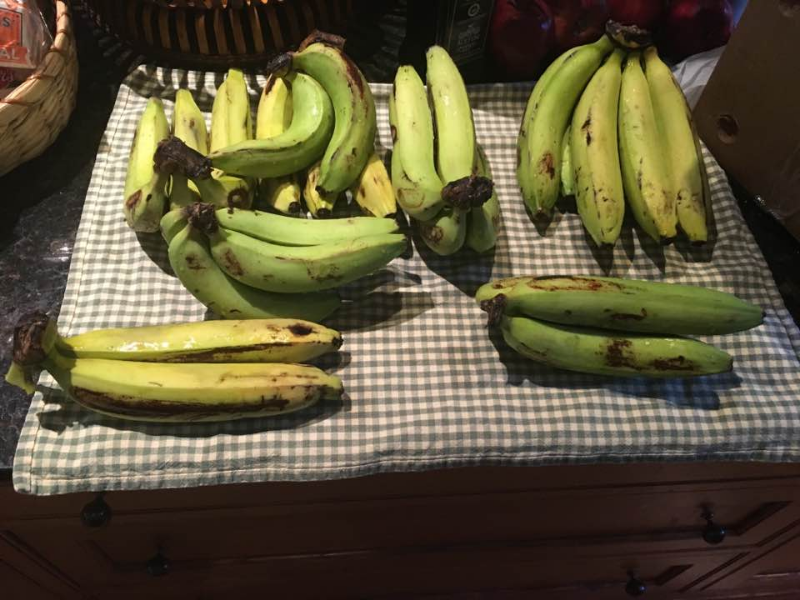
Gros Michel Banana
The Gros Michel banana was ‘the’ banana. It was essentially the standard.
A Gros Michel was used by the alchemist who created the first banana split. There’s also a scientist who created a synthetic banana flavor that’s exactly the taste of Gros Michel bananas, too.
These thick-skinned, yellow-green bananas are also known as Big Mike, Banano, and Guineo Gigante. They were tremendously popular but not until the 1950s and it’s all because of the banana species’ age-old enemy: the Fusarium wilt, also known as the Panama disease.
After the plants were infected with Panama disease, their yields dropped and it destroyed the Gros Michel industry. They were then subsequently replaced by the Cavendish.
However, the Gros Michel banana is still farmed in Uganda today where it is called the Bogoya. They are also grown in other parts of the world through permaculture methods which means they may not be as huge and thick as they were if you recall eating Gros Michel bananas from markets back in the day.
Nevertheless, this candy-flavored banana is still amazingly sweet and flavorful. They are a great banana variety for creating banana pies since they are sweet, creamy, and have a strong scent. The only problem you’d have to face though is finding them.
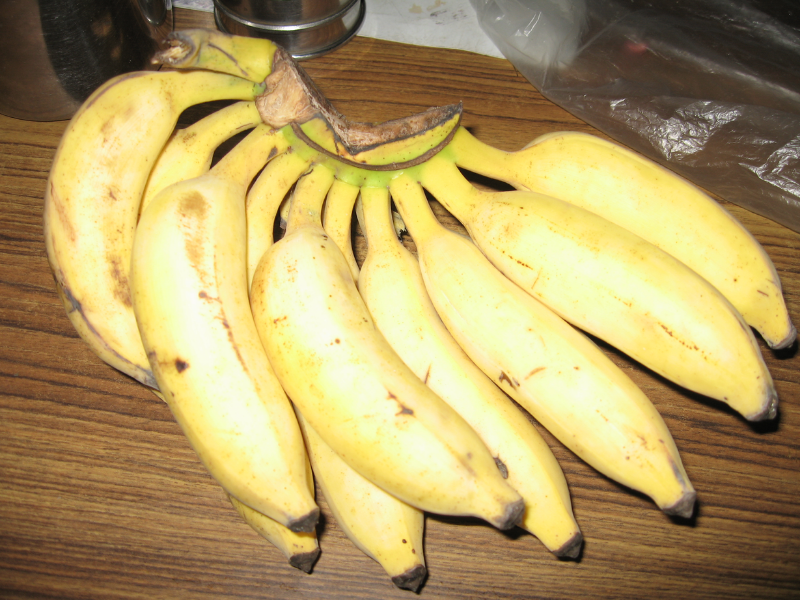
Nanjangud Banana
Nanjangud yellow bananas got their name from their origins. Nanjangud bananas are grown only around Nanjangud City in the Mysore District and also in the Chamarajanagar district of Karnataka, India.
This banana variety is also known locally as Mysore bananas or Nanjangud Rasabalehannu.
In India, this little thin-skinned fruit is the most important banana crop. Because of the unique farming style and the black clay alluvial saline soil surrounding Nanjangud, the fruit developed its unusual flavor and scent, as well as its tangy and somewhat sweet taste.
It’s because of its unique flavor and aroma that made them very well-loved and popular.
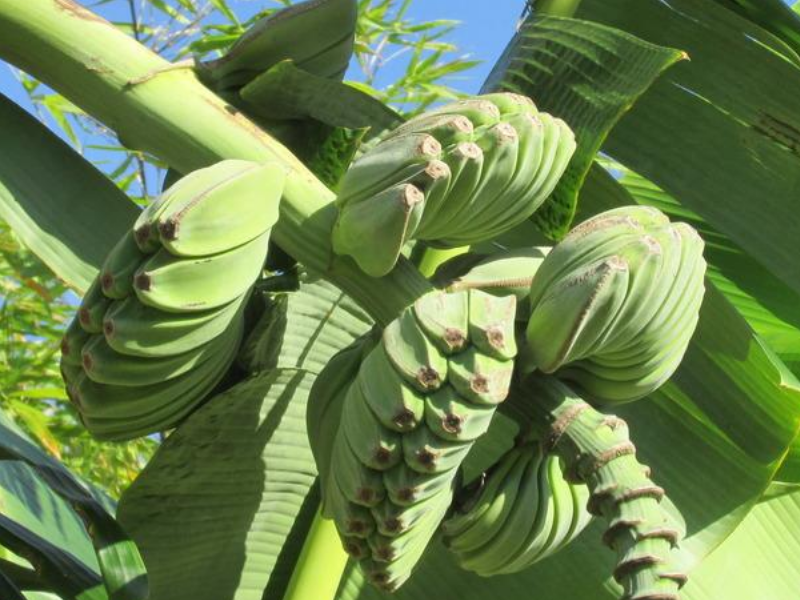
Praying Hands Banana
It’s only fitting to give Praying Hands bananas their name because of their unusual shape. Praying Hands bananas got their name because the two adjacent “hands” grow and merge.
These bananas are green at first, then turn yellow with black spots as they mature. Their firm, starchy flesh is not as sweet compared to other types of bananas. It has a vanilla-like flavor and is yellowish.
They’re usually stir-fried, baked into banana chips, or added to rolls. The best time to do so is when they are ripe and yellow. Overripe Praying Hands bananas soften up and can be eaten uncooked.

Matoke Banana
The Matoke or East African Highland banana is a starchy triploid banana cultivar originating from the African Great Lakes. They are Eastern Africa’s staple meal as well as their main crop.
It is also known as matooke, amatooke in Buganda (Central Uganda), ekitookye in Southwestern Uganda, ekitooke in Western Uganda, kamatore in Lugisu (Eastern Uganda), ebitooke in Northwestern Tanzania, and igitoki in Rwanda and Burundi.
Matoke is considered a variety of plantain in Uganda and Eastern Africa that can be green or yellow. It is essentially a cooking banana because of its starchiness.
It’s green and underripe when it’s harvested, and it’s cautiously peeled before being cooked and pounded into a meal. Matoke bananas are steam-cooked and mashed to make the national dish of both Uganda and Rwanda. The national dish is also called Matoke in Uganda and tastes like a stew since it is made with matoke bananas and beef.

Rhino Horn Banana
The name Rhino Horn comes from the fact that this banana cultivar is a tall plantain that produces very long and curved bananas, reminiscent of a rhino’s horn. Rhino Horn bananas are the largest of all bananas, growing to around 2 feet in length.
Rhino Horn bananas, also known as Rhino Horn plantains or African Rhino Horn bananas, are African-bred hybrid banana types. They have golden-yellow skins with a curled, elongated appearance.
They may be eaten raw, as well as boiled, steamed, and baked. On the other hand, aside from eating, this plant is also ideal for landscaping because of its dappled red pseudostem and petioles. Although, it may be too large for most containers.
This banana type has lovely foliage and can grow to a height of up to 20 feet. It’s going to be a conversation starter if you decide to grow one in your place.
Master the different banana types
These are just some of the best and most well-known types of bananas that you can find around the world. As you can see, you will not just enjoy the great taste and nutritious benefits of bananas, but you will be impressed with their great varieties.
Try to eat and explore as many banana types as possible. See which one would make a great addition to your favorite list of fruits!

